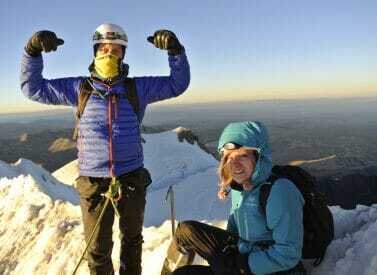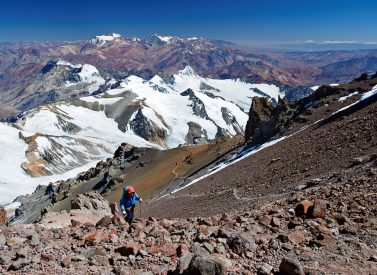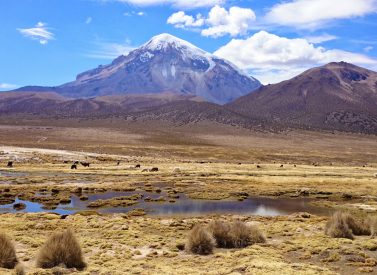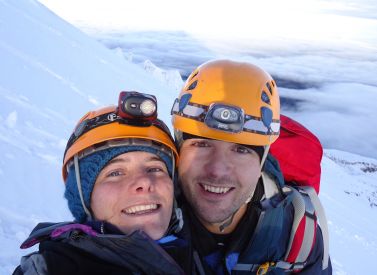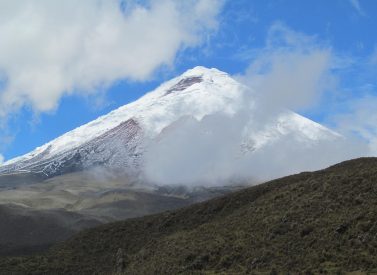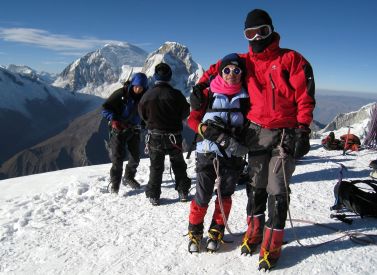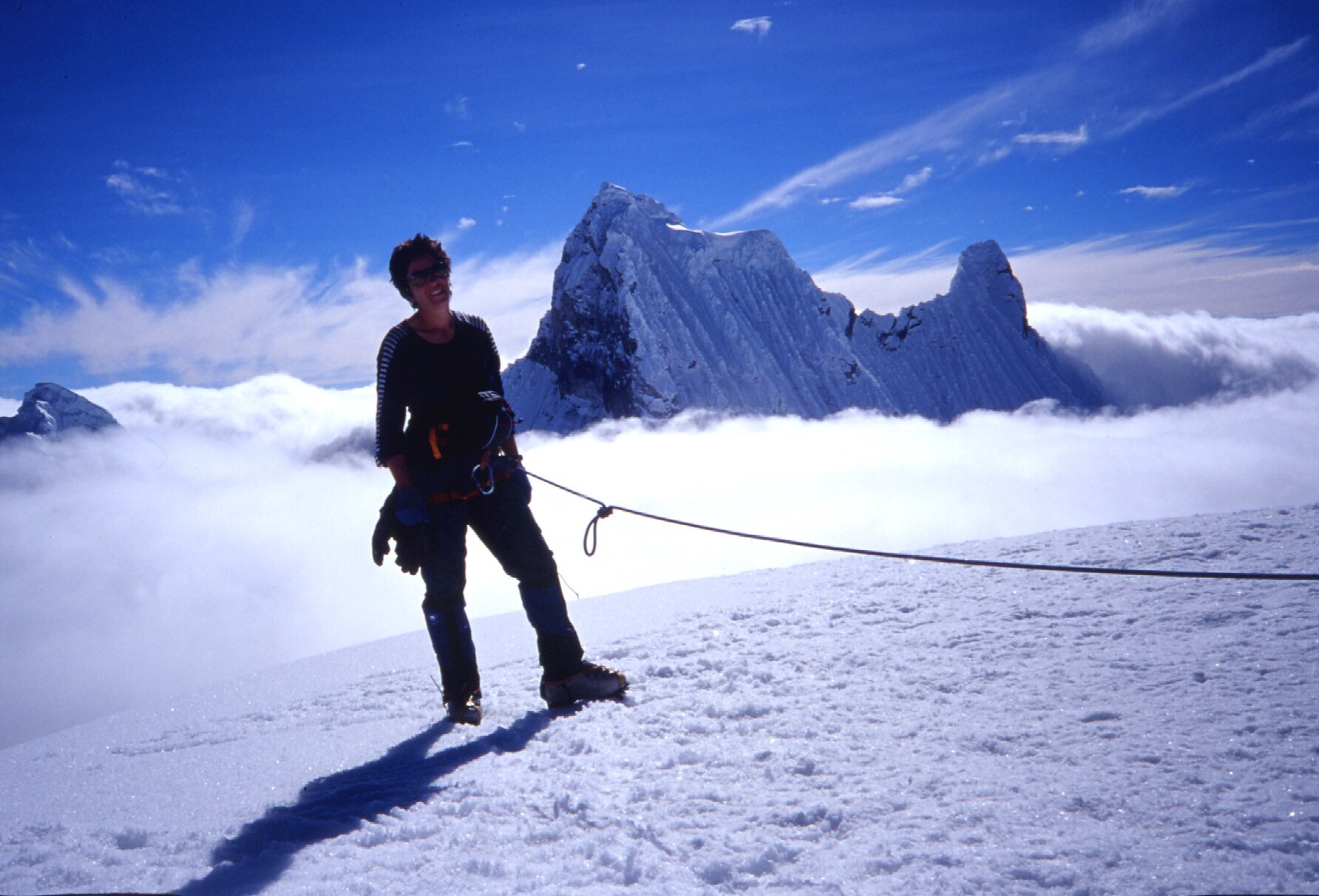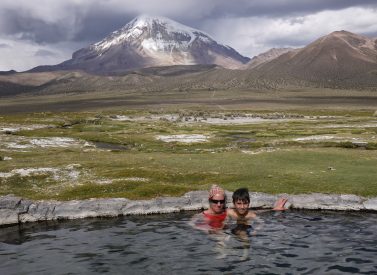Successful High Altitude Acclimatisation
 by Kathy Jarvis on 15th September, 2020
by Kathy Jarvis on 15th September, 2020
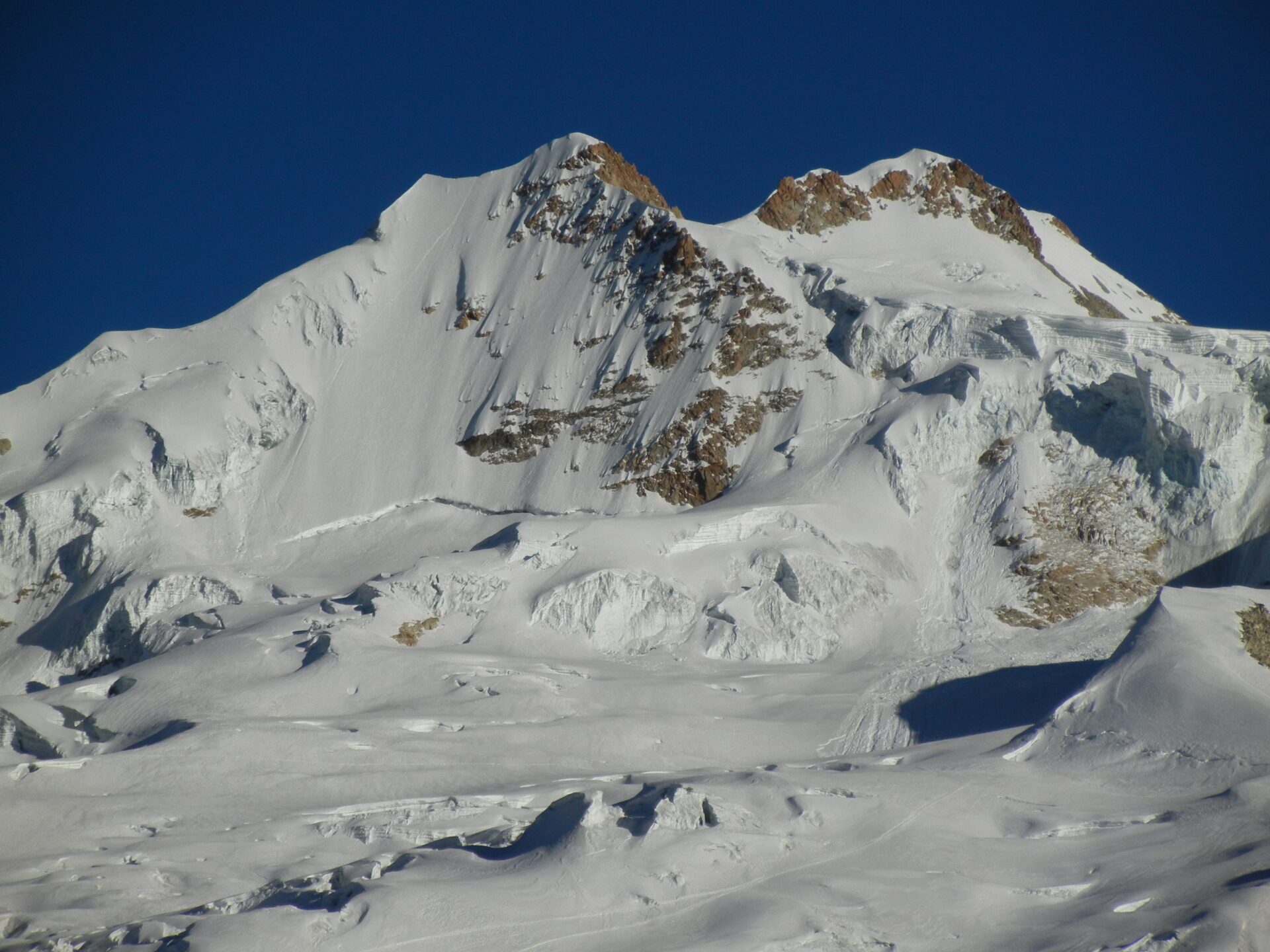
Summit of Huyana Potosi.
How do I successfully achieve high altitude acclimatisation?
This is the question that anyone travelling to the high altitude Andean areas of Peru, Ecuador, Bolivia, Chile, Argentina or Colombia should be asking themselves.
Successful acclimatisation will make a huge difference to your visit. It will mean you have a much safer and more enjoyable experience, whether trekking or climbing high Andean peaks.
Over the past 25 years I have been up many 5,000 m plus peaks and trekked many fabulous routes in the Andes. I have suffered altitude headaches, lethargy, loss of appetite and certainly lack of breath when trying to move too fast up mountain paths, or even just attempting to run up hotel stairs in Cusco. I have learned, over the years, that taking the time to acclimatise properly is key to a successful trip.
I cannot recommend enough the need to take as long as you possibly can to achieve a good acclimatisation. Programme in extra days, spend as long as possible at each altitude as you ascend, take it slowly, add rest days. Give yourself time so you will get full enjoyment from your trip.
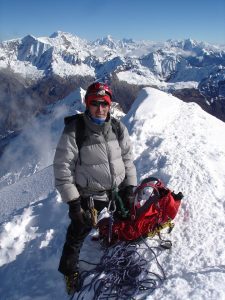
What effects will I feel at altitude?
Altitude sickness, often referred to as AMS, is caused when you travel to altitudes 2500 metres above sea level or higher too quickly. Your body is exposed to low oxygen at high altitudes which can affect you in a number of ways. At altitude you will instantly notice some changes. As soon as you step off a plane in Cusco (3,450 m) you will feel the air is thinner than at sea level. You will find you need to breath more, your pulse will be higher, you will need to pee more especially at night and you may find sleep more difficult.
Over a period of days and weeks up high your body will adapt to the rarefied air and slowly become acclimatised. This is the process of high altitude acclimatisation. If you push it too hard and go too high too fast before you are acclimatised you risk suffering altitude sickness. This could be mild or turn into something a lot more serious, even life threatening.
Will I get altitude sickness?
Anyone can get altitude sickness. You may get altitude sickness if you travel to high altitudes too fast. It doesn’t matter what age or gender you are, nor how fit. Certain people are affected more while others are less susceptible.
Generally speaking you can never know whether you will be affected or not. Just because you have not developed it before does not mean that you may not develop it on a subsequent trip.
All of the high mountain trips that Andean Trails organise include acclimatisation. This should be the case for any organised mountaineering or trekking trip booked through a company. The itinerary will be carefully planned and guides will be trained in altitude risks and know what to look out for. However, the more you know yourself, the better.
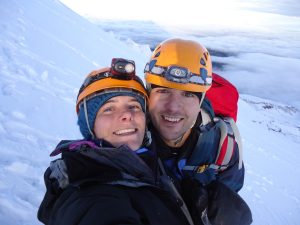
What are the symptoms of altitude sickness to look out for?
Most cases are mild, with symptoms that can include:
- headache
- nausea and vomiting
- loss of appetite
- light headed feeling and dizziness
- drowsiness and feeling tired
- struggling if you run up a hill or climb stairs fast
After a few days the symptoms will fade and you will be able to continue your trip, always bearing in mind the altitude profile and speed of ascent.
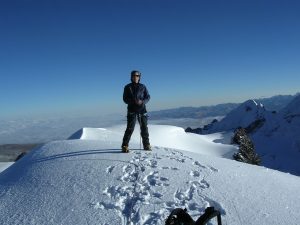
How do I prevent altitude sickness?
- Good acclimatisation is key. Each person varies in how long it takes to acclimatise.
- Read up on altitude issues before you go. Learn about symptoms and how to deal with them.
- Plan your acclimatisation programme carefully. Have some flexibility and an escape route if you need to come down quickly.
- Don’t fly in to high altitude airports if you can avoid it. Cusco is ok at 3,450 m, La Paz at 4200 m should be avoided.
- Give yourself time to adjust. It usually takes a few days for the body to get used to a change in altitude. Ascending slowly will give your body time to adapt so take 2 to 3 days at 2,500 m before going any higher.
- Once above 3,000m try not to increase the altitude at which you sleep by more than 300-500m a night. Climb high but sleep low.
- Build rest days into your trekking programme, take a rest day every 2 to 3 days. Don’t over exert.
- Eat lightly, avoid alcohol for the first few days at altitude.
- Keep hydrated, have your water bottle handy and drink several litres (2-4) of water a day .
- Always be prepared to come down if in doubt.
What should I do if I have symptoms?
- If you have mild symptoms of altitude sickness, tell someone travelling with you so they can keep an eye on how you are.
- Do not go any higher for at least 24 to 48 hours. You can continue to ascend if your symptoms improve after this.
- If your symptoms get worse or do not improve after 24 to 48 hours, descend by at least 500m.
Severe altitude sickness is a medical emergency. Anyone showing severe symptoms should immediately descend to a low altitude and seek medical help.
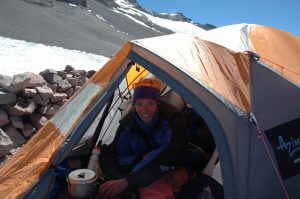
What is severe altitude sickness, is it dangerous?
In rare cases, altitude sickness can cause fluid to build up either on the lungs or the brain. High altitude cerebral oedema (HACE) affects the brain and high altitude pulmonary oedema (HAPE) affects the lungs.
These are extremely serious conditions and require immediate medical attention.
Look out for severe tiredness, total loss of appetite, change in personality or behaviour, racing pulse, persistent shortness of breath. These may indicate onset of severe sickness a worsening condition.
Other symptoms of HACE or HAPE can include:
- a bubbling sound in the chest
- coughing up pink, frothy liquid,
- tightness in the chest and difficulty breathing
- clumsiness and difficulty walking, balance and coordination problems
- hallucinations and confusion, altered mental state
In the case of HACE the person will often not realise they’re ill. They may insist they are fine. This condition develops fast and can be fatal.
Treating HACE:
- move down to a lower altitude immediately
- take dexamethasone, a steroid medicine that reduces swelling of the brain
- give bottled oxygen, if available
- Get medical attention immediately
The symptoms of HAPE can start to appear a few days after arrival at high altitude. It can be fatal if it’s not treated immediately.
Treating HAPE:
- move down to a lower altitude immediately
- take nifedipine, a medicine that helps to reduce chest tightness and make breathing easier
- give bottled oxygen, if available
- Get medical attention immediately
Read more: https://www.nhs.uk/conditions/altitude-sickness
Share


 a Group Tour
a Group Tour 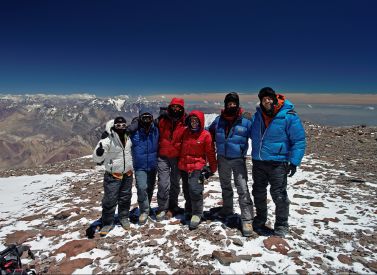

 a Tailor Made Tour
a Tailor Made Tour 